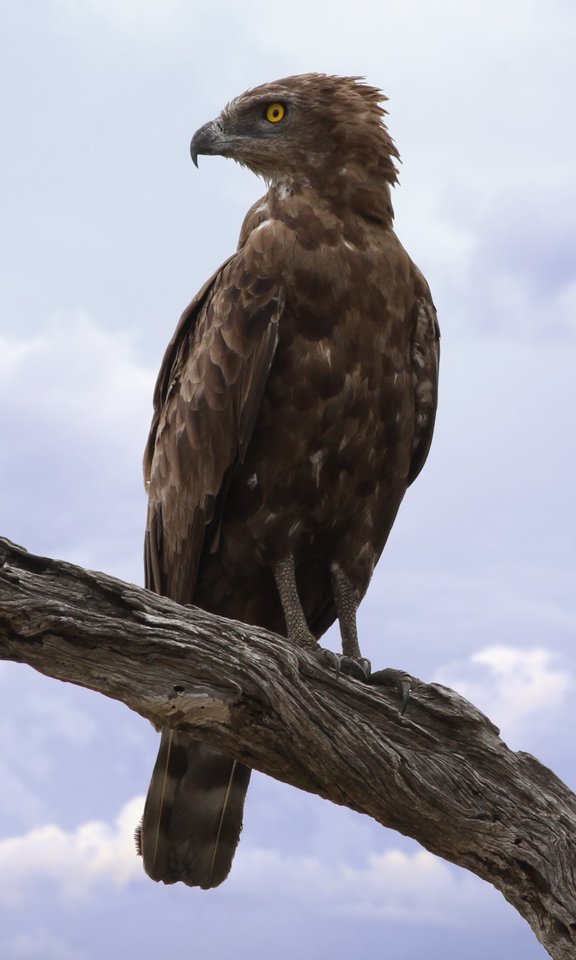The brown snake eagle, also known as the hook-billed eagle or hooked-nosed eagle, is a large bird of prey found in Africa. Its scientific name is Circaetus cinereus. This eagle is known for its distinctive hooked beak and unique nose structure, which are adapted for catching and eating snakes.
The Hooked Beak of the Brown Snake Eagle
One of the most notable features of the brown snake eagle is its beak. The beak is strongly hooked, with a sharp tip that is curved downward. This hooked shape allows the eagle to easily grasp and hold onto slippery snakes, which are its primary food source. The beak is also equipped with a sharp “tomial tooth” on each side of the upper mandible, which is used to sever the spinal cord of its prey.
The Unique Nose Structure of the Brown Snake Eagle
 Image source: Brown snake eagle By Derek Keats
Image source: Brown snake eagle By Derek Keats
The nostrils of the brown snake eagle are located on the top of its beak, which is a common feature among birds of prey. This allows the eagle to breathe while its beak is closed around its prey. The nostrils are also covered by a thin membrane, which helps to keep out dust and debris while the eagle is soaring through the air.
Physical Characteristics of the Brown Snake Eagle
The brown snake eagle is a large bird, with a wingspan of up to 6.5 feet (2 meters). It has a light brown or gray body, with darker brown or black markings on its wings and tail. The head and neck are a paler color, with a distinctive white “necklace” of feathers around the base of the neck.
Habitat and Distribution of the Brown Snake Eagle
This eagle is found throughout much of Africa, from Senegal and Gambia in the west to Ethiopia and Somalia in the east. It prefers open habitats, such as savannas and grasslands, where it can easily spot its snake prey.
Hunting Behavior of the Brown Snake Eagle
The brown snake eagle is a skilled hunter, using its keen eyesight to spot snakes from a distance. It then swoops down from the air, using its hooked beak to grab the snake and carry it back to a perch to eat. The eagle is capable of eating a wide variety of snakes, including venomous species.
Conservation Status of the Brown Snake Eagle
In terms of conservation, the brown snake eagle is listed as a species of least concern by the International Union for Conservation of Nature (IUCN). However, it is threatened by habitat loss and fragmentation, as well as persecution due to its perceived threat to poultry and livestock.
Conclusion
The brown snake eagle is a fascinating bird of prey with a distinctive hooked beak and unique nose structure that are adapted for catching and eating snakes. Its physical characteristics, hunting behavior, and conservation status make it an interesting subject of study for birdwatchers and naturalists alike.
References:
- Missouri Department of Conservation. Plains Hog-Nosed Snake. https://mdc.mo.gov/discover-nature/field-guide/plains-hog-nosed-snake
- Missouri Department of Conservation. Eastern Hog-Nosed Snake. https://mdc.mo.gov/discover-nature/field-guide/eastern-hog-nosed-snake
- iNaturalist. “We knew this was the sighting of a lifetime.” – Observation of the Week 8/10/18. https://www.inaturalist.org/blog/18182-we-knew-this-was-the-sighting-of-a-lifetime-observation-of-the-week-8-10-18
- Adobe Stock. “Hooked Nose” Images. https://stock.adobe.com/search?k=%22hooked+nose%22.

